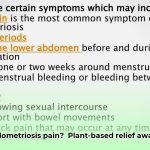Is your canine companion showing signs of stiffness, limping, or reluctance to play? As devoted pet owners, we naturally seek ways to alleviate their discomfort and improve their quality of life. Joint pain and inflammation are common issues in dogs, especially as they age. Fortunately, diet plays a crucial role in managing these conditions. Crafting your own anti-inflammatory dog food allows you to take control of the ingredients, ensuring optimal nutrition and tailoring meals to your dog’s specific needs, including boosting their omega-3 intake, maximizing antioxidant benefits, and avoiding potential allergens. For more detailed recipes and guidance, check out this helpful resource on homemade anti-inflammatory dog food.
This comprehensive guide provides vet-approved recipes, detailed nutritional information, and essential tips for creating healthy, delicious meals to help your dog feel their best. We’ll delve into the benefits and potential risks of homemade dog food, empowering you to make informed decisions about your dog’s dietary needs.
Understanding Canine Inflammation and Its Dietary Management
Inflammation is a natural bodily response to injury or infection, serving as a protective mechanism. However, when inflammation becomes chronic, it can lead to a cascade of health problems, including arthritis, hip dysplasia, allergies, and even certain types of cancer. Understanding the underlying causes of canine inflammation and implementing effective dietary management strategies are crucial for promoting long-term health and well-being.
Key Principles of Anti-Inflammatory Dietary Management
- Identify and eliminate potential triggers: Just like humans, dogs can have sensitivities or allergies to certain ingredients, such as wheat, corn, soy, and artificial additives, which can exacerbate inflammation.
- Incorporate anti-inflammatory ingredients: Focus on including foods rich in omega-3 fatty acids, antioxidants, and other beneficial compounds that help quell inflammation.
- Balance macronutrient ratios: The optimal balance of protein, fat, and carbohydrates is essential for overall health and can influence inflammatory responses.
- Support gut health: A healthy gut microbiome plays a vital role in regulating inflammation. Include prebiotic and probiotic-rich foods to promote a balanced gut flora.
Essential Anti-Inflammatory Ingredients for Dogs
Certain ingredients stand out for their potent anti-inflammatory properties and safety for canine consumption:
- Omega-3 Fatty Acids: These essential fats are found abundantly in oily fish like salmon, sardines, and mackerel. Flaxseed oil, chia seeds, and hemp seeds are also excellent plant-based sources. Omega-3s act as natural joint protectors by reducing inflammation, improving joint lubrication, and supporting cartilage health.
- Antioxidants: These powerful compounds protect cells from damage caused by free radicals, which contribute to inflammation. Berries (blueberries, cranberries, raspberries), dark leafy greens (spinach, kale), carrots, and sweet potatoes are packed with antioxidants.
- Turmeric and Ginger: These spices contain potent anti-inflammatory compounds like curcumin and gingerol, respectively. However, use them sparingly (a pinch or two per serving) to avoid potential stomach upset.
- Quercetin: This flavonoid, found in apples, berries, broccoli, and leafy greens, has anti-inflammatory and antioxidant properties.
- Probiotics: These beneficial bacteria promote a healthy gut microbiome, which is crucial for regulating inflammation. Yogurt (plain, unsweetened) and kefir are good sources of probiotics.
Important Note: Always consult your veterinarian or a board-certified veterinary nutritionist before making significant dietary changes, especially if your dog has underlying health conditions.
Recipe 1: Classic Chicken & Sweet Potato Anti-Inflammatory Dog Food
This recipe is a great starting point and is suitable for most dogs. However, it’s crucial to adjust the amounts based on your dog’s individual size, activity level, and any specific dietary needs or sensitivities.
Ingredients:
- 1 pound boneless, skinless chicken breast (cooked and shredded or diced)
- 1 large sweet potato (peeled and cubed, cooked until soft – steaming or boiling are preferred methods to retain nutrients)
- 1 cup cooked brown rice or quinoa (for a grain-free option, use lentils or chickpeas)
- 1 tablespoon olive oil or coconut oil (for added healthy fats)
- ½ teaspoon ground turmeric (optional, for its anti-inflammatory properties)
- ¼ teaspoon ground ginger (optional, for its anti-inflammatory properties)
- A handful of chopped spinach or kale (for added antioxidants and vitamins)
Instructions:
- Cook the chicken thoroughly using your preferred method (baking, boiling, or poaching). Ensure it’s fully cooked to eliminate any risk of salmonella. Shred or dice the chicken into small, manageable pieces.
- Steam or boil the sweet potato until soft. This helps retain more nutrients compared to roasting.
- Cook the brown rice or quinoa according to package instructions.
- In a large bowl, combine all ingredients.
- Mix thoroughly to ensure even distribution of nutrients.
- Allow the mixture to cool completely before serving.
- Store leftovers in an airtight container in the refrigerator for up to 3 days.
Serving Suggestions:
- Start with small portions and gradually increase the amount as needed, monitoring your dog’s weight and stool consistency.
- You can add a dollop of plain yogurt or kefir for added probiotics.
- For picky eaters, try warming the food slightly to enhance the aroma.
Recipe 2: Salmon & Green Bean Delight Anti-Inflammatory Dog Food
This recipe offers a different protein and vegetable combination, providing variety and a boost of omega-3 fatty acids.
Ingredients:
- 1 (14.75-ounce) can of salmon (packed in water, no added salt, boneless and skinless, drained) – ensure it’s wild-caught for higher omega-3 content
- 1 cup cooked and chopped green beans (fresh or frozen)
- ½ cup cooked quinoa or brown rice
- 1 tablespoon flaxseed oil or hemp seed oil (for an extra boost of omega-3s)
- ¼ cup chopped carrots (optional, for added antioxidants)
- A pinch of dried parsley (optional, for flavor and added nutrients)
Instructions:
- Ensure the green beans are cooked thoroughly (steamed or boiled) and chopped into bite-sized pieces.
- Combine all ingredients in a bowl gently.
- Mix well to distribute the flaxseed oil evenly.
- Serve immediately or store in the refrigerator for a later meal (consume within a day or two).
Important Considerations:
- Always check the salmon carefully for any remaining bones.
- If using frozen green beans, thaw them completely before cooking.
- For dogs with sensitive stomachs, introduce this recipe gradually.
Calculating Macronutrient Ratios for Homemade Anti-Inflammatory Dog Food
Understanding macronutrients – protein, fat, and carbohydrates – and their optimal ratios is crucial for creating a balanced and effective anti-inflammatory diet for your dog. This step-by-step guide will help you calculate the right proportions for your dog’s specific needs.
Setting Up a Step-by-Step Guide
- Determine daily caloric needs: Use an online dog calorie calculator (you can find several by searching online, many are created by veterinary schools), considering breed, weight, age, activity level, and any underlying health conditions. This will provide you with a baseline for how much food your dog needs each day.
- Set target macronutrient percentages: A common starting point for an anti-inflammatory diet is:
- Protein: 30-40% of total daily calories
- Fat: 20-30% of total daily calories (emphasize omega-3s)
- Carbohydrates: 30-40% of total daily calories (choose low-glycemic options like sweet potato, quinoa, or lentils)
- Fiber: Aim for 2-5% of total daily calories to support gut health.
- Ingredient selection: Choose high-quality, whole-food ingredients that align with your target macronutrient percentages. Focus on lean protein sources (chicken, turkey, fish), healthy fats (flaxseed oil, olive oil, coconut oil), and complex carbohydrates (sweet potato, quinoa, lentils).
-
Calculate ingredient amounts: This is where it gets a bit more technical. You’ll need to use a nutrition calculator or online database (such as the USDA FoodData Central) to determine the macronutrient content of each ingredient you plan to use. Then, use the following formula to calculate the amount of each ingredient needed to meet your target macronutrient percentages:
- (Target calories from macronutrient / Calories per gram of macronutrient) / Calories per gram of macronutrient in ingredient = Grams of ingredient needed
- Refine and adjust: Once you’ve calculated the initial ingredient amounts, use the nutrition calculator to analyze the overall macronutrient profile of your recipe. Adjust the amounts of each ingredient as needed to fine-tune the recipe and meet your target percentages.
Recipe Example: Chicken and Sweet Potato (for a 10kg dog with moderate activity)
Let’s say a 10kg dog with moderate activity needs 500 calories per day. Using the target macronutrient percentages above, we can calculate the target grams of each macronutrient:
- Protein: (35% of 500 calories) / 4 calories per gram = 43.75 grams of protein
- Fat
- Plant-based Diet Colitis Remission: Success Stories - December 18, 2025
- Plant Based Diet Breast Cancer: Research-Based Benefits - December 16, 2025
- Plant-Based Diet Ulcerative Colitis Remission: Proven Benefits - December 15, 2025










